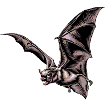Museum, University of Nebraska State

University of Nebraska State Museum: Mammalogy Papers
Document Type
Article
Date of this Version
Spring 2018
Citation
Nebraska History (Spring 2018) 99(1): 58-71.
Abstract
Beginning in the mid-1950s many of Long Expedition artist Titian Ramsay Peale’s images have come into institutional holdings, particularly the American Philosophical Society, American Museum of Natural History, and Library of Congress, where they have been made freely available to researchers and for exhibitions. This has allowed a rediscovery and reevaluation of Peale’s works by art historians, historians of science, and scientists. Art historian Barbara Novak listed Peale among the artist-scientists that reached “‘heroic’ status” because of the risks and hardships that he and others undertook in the exploration of the American continent. Haltman credited Peale and his fellow artist on the Long Expedition, Samuel Seymour, with innovating “such hybrid pictorial forms as wilderness landscape. . , natural history illustration featuring specimens in representative environments . . , ethnographic portraiture . . , and genre painting . . . .” In fact, from a scientific viewpoint, Peale’s images present information on the identifying characteristics of the organism, its geographic distribution, and its ecology.


Comments
Copyright 2018, Nebraska History. Used by permission.